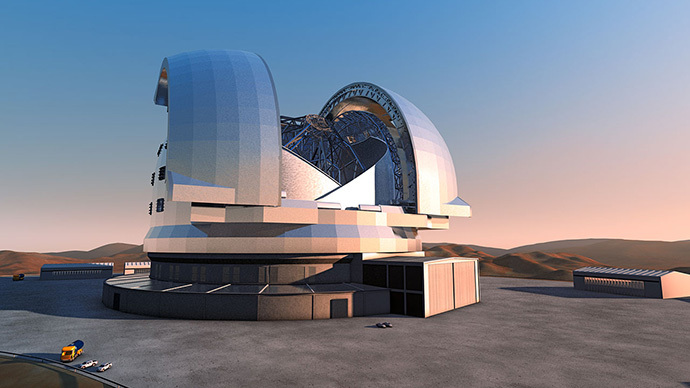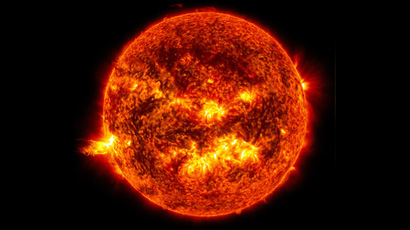Astronomers blast off mountain top for largest ever telescope

The European Southern Observatory has blasted off the top of 3,000 meter high Cerro Armazones mountain in Chile to set up the European Extremely Large Telescope - “the world’s biggest eye on the sky”, according to astronomers.
The blast took place at around 17:30 GMT in the Chilean Andes at the top of the Cerro Armazones mountain. As a result the mountain top was reduced by 40 meters to provide a plateau on which the ESO will build the revolutionary new ground-based telescope.
The EEL-T will have a 39-meter main mirror and will be the largest optical/near-infrared telescope in the world - "the world’s biggest eye on the sky," said ESO.
“Such a telescope may, eventually, revolutionise our perception of the Universe, much as Galileo's telescope did, 400 years ago.”

The EEL-T telescope will be four times as large as any other constructed and 15 times faster creating images 16 times sharper than even the Hubble Space Telescope.
The telescope is designed on a five-mirror scheme with the primary mirror consisting of almost 800 segments, each 1.4 meters wide, but only 50 mm thick. The secondary mirror 4.2 meters in diameter will be bigger than the primary mirrors of any of the ESO's telescopes at La Silla Observatory in Chile.
The start of EEL-T construction is planned for late 2014 and it will launch operations early in the next decade.
ESO claims that one of the most exciting goals of the mission is the possibility of making a direct measurement of the acceleration of the Universe's expansion.
Еhe revolutionary device will help astronomers “advance astrophysical knowledge, allowing detailed studies of subjects including planets around other stars, the first objects in the Universe, super-massive black holes, and the nature and distribution of the dark matter and dark energy which dominate the Universe.”
In 1998 ESO built their previous telescope – the Very Large Telescope (VLT) of four eight-meter wide telescopes - with a similar mountain-top levelling to create a flat surface on which to build.















